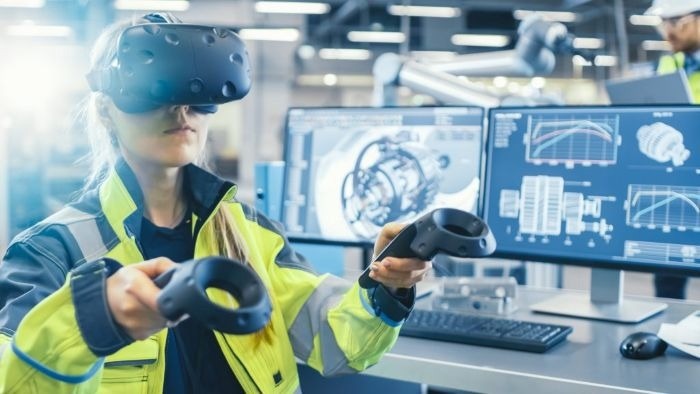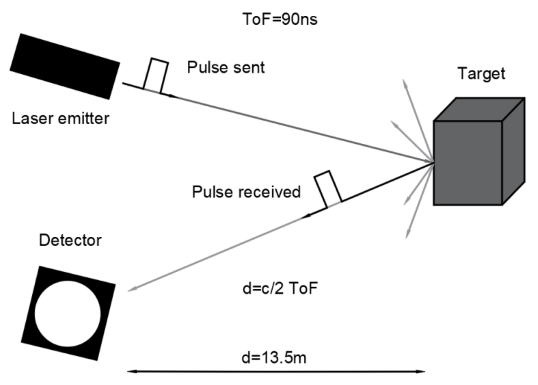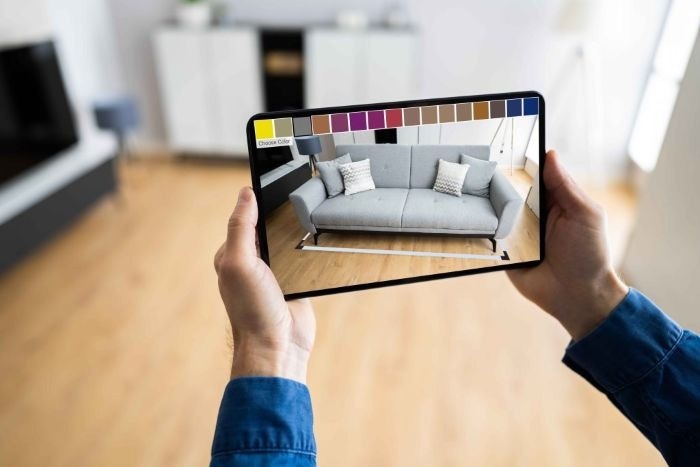LiDAR VR/AR applications elevate augmented and virtual reality applications to new heights.
A basic LiDAR system, once prohibitively expensive and cumbersome for consumer applications, can now be reduced in size to fit into a smartphone for less than $100. This article will examine how they function and what to expect from the LiDAR-AR/VR combination.

LiDAR for AR/VR makes augmented or virtual reality more responsive. Image Credit: Avantier Inc.
What is LiDAR?
Think of LiDAR as an optical radar. Light Detection and Ranging (LiDAR) creates a highly accurate, super-fast 3D map of an object or area using laser light waves. Depending on the application, the laser's wavelength ranges from 250 nm to 11 μm.
A quick-functioning sensor performs time-of-flight (TOF) calculations, measuring how long each laser pulse takes to reach and return. It then uses this raw data and point clouds to produce a precise 3D map of terrain or objects and their placement in space.
The intensity of the reflected light can also provide valuable information about the materials examined and their density.

LiDAR for AR/VR uses time of flight principles to determine the topology of an object or landscape. Image Credit: Avantier Inc.
LiDAR scanners were originally designed for scientific purposes, particularly in meteorology. It was successfully used to map the moon's surface in 1971, but the technology has advanced tremendously, and LiDAR is now cheaper, faster, and more powerful than ever before.
This increasing affordability is one of the factors driving the current boom of LiDAR adoption in real-world businesses. This can be seen in self-driving cars, speed enforcement, stormwater management in agriculture, and AR/VR.
LiDAR and AR
Before integrating LiDAR with augmented reality, AR was constrained by clumsy machine vision technologies that struggled to produce accurate, real-time 3D mapping. Today, LiDAR provides exact spatial mapping at the speed of light, allowing AR and VR systems to be faster, more accurate, and more responsive.

Today LiDAR for AR/VR can be condensed to fit inside a smartphone. Image Credit: Avantier Inc.
Apple included a small LiDAR system in the 2020 iPad Pro and iPhone Pro 12, making LiDAR's capabilities available to AR and VR app developers for the first time. The devices have since undergone rigorous testing.
LiDAR integration benefits augmented reality (AR) and virtual reality systems. Some advantages of the integration include:
- Improved spatial tracking
- Faster virtual object placement
- Enhanced realism
- Improved depth sensing
LiDAR for AR/VR Specifications
Today's smartphones, AR, and VR viewing devices can elevate their viewers' experiences by incorporating LiDAR technology. However, the types and capabilities of LiDAR scanners differ significantly. Here is a quick rundown of some of the key specifications for AR/VR LiDAR.
The LiDAR Detection Range is the maximum distance LiDAR can detect an object. It depends on the laser's power, kind, and aperture size. While aircraft LiDAR may image surfaces from hundreds to thousands of meters away, consumer LiDAR typically has significantly shorter detection ranges. The LiDAR on the iPhone Pro 12 can scan distances of up to five meters.
LiDAR Range Precision indicates how repeatable readings will be. If accuracy is high, successive measurements of the same object will cluster around a mean value; low precision indicates large scatter.
LiDAR Range Accuracy is like precision, except that it compares measurements to the real distance rather than each other. High accuracy indicates that measurements are extremely near to the actual distance.
Field of View (FOV) is defined as the angle covered by the sensor or the angle of signal emission, whichever is smaller. A mechanically rotating device can provide a 360-degree FOV, however for many virtual reality applications, a narrower FOV is adequate.
The Scan Pattern describes how the laser beam moves during measurement, including point density and the number of scan lines. Some LiDAR scanners may allow you to customize this setting.
AR/VR LiDAR at Avantier
Avantier is a leading manufacturer of custom high precision optics, including LiDAR components and systems designed to meet its customers' exact demands. Its skilled engineers and designers are available to assist you at any point in the process, whether you are conducting preliminary research or have a custom design ready for implementation.
References and Further Reading
- Applied Technology Review. (2024). LiDAR Powering Future AR/VR and Metaverse Experiences. (online) Available at: https://www.appliedtechnologyreview.com/news/lidar-powering-future-arvr-and-metaverse-experiences-nwid-1533.html.
- Luetzenburg, G., Kroon, A. and Bjørk, A.A. (2021). Evaluation of the Apple iPhone 12 Pro LiDAR for an Application in Geosciences. Scientific Reports, (online) 11(1), p.22221. https://doi.org/10.1038/s41598-021-01763-9.
- Wandinger, U. (2021). Introduction to Lidar. Lidar, (online) 102, pp.1–18. https://doi.org/10.1007/0-387-25101-4_1.

This information has been sourced, reviewed and adapted from materials provided by Avantier Inc.
For more information on this source, please visit Avantier Inc.